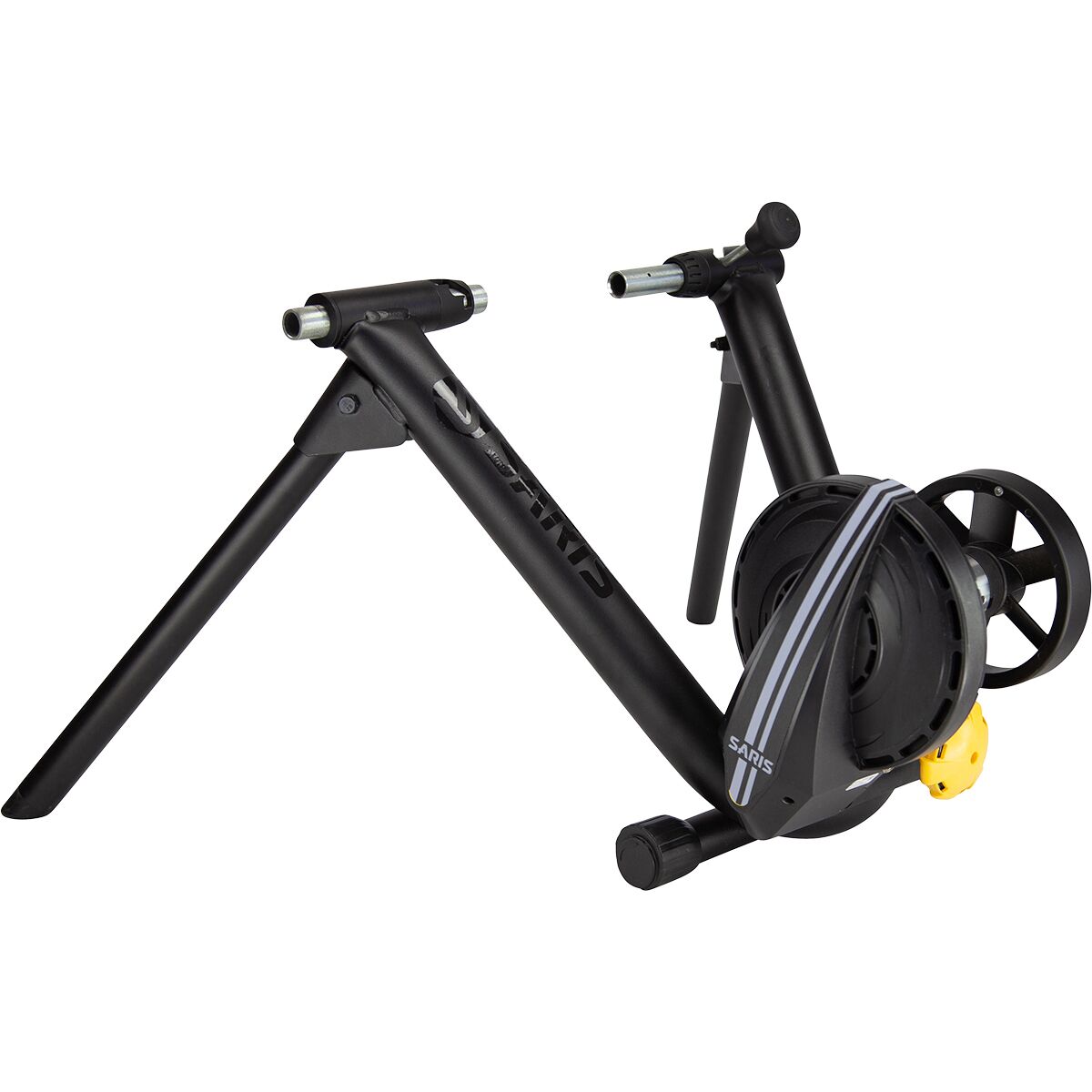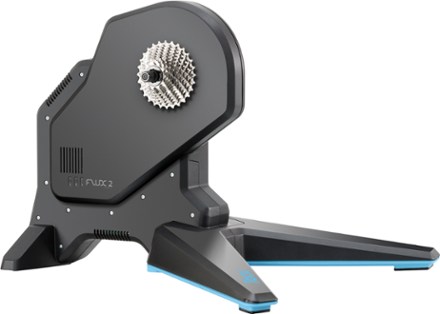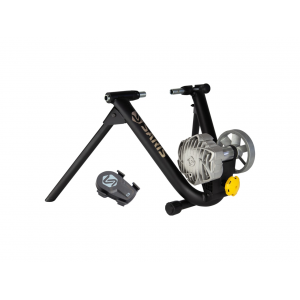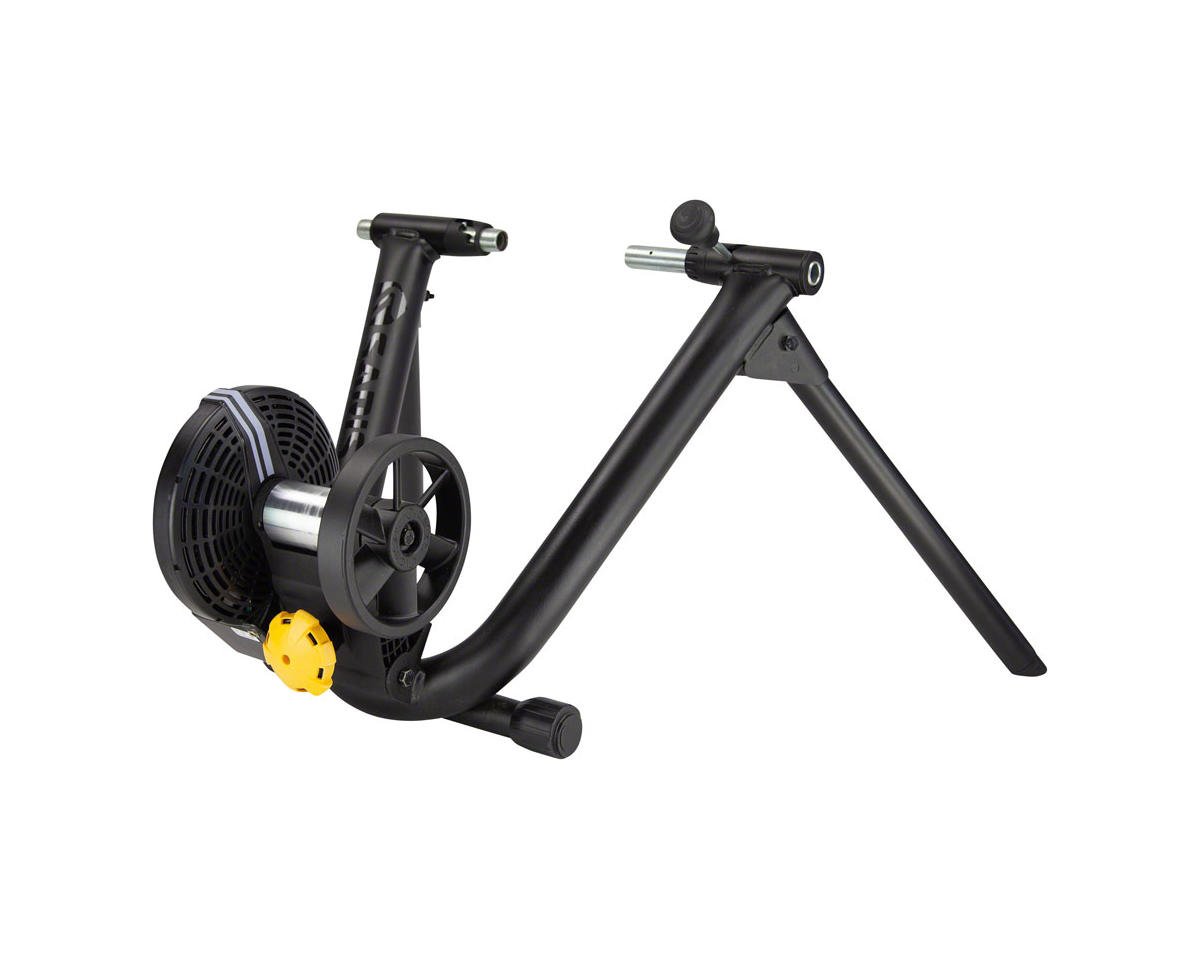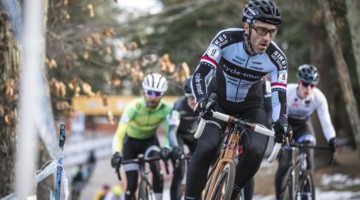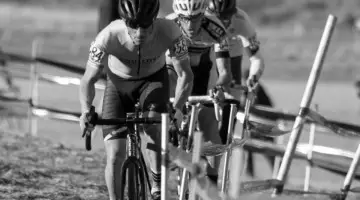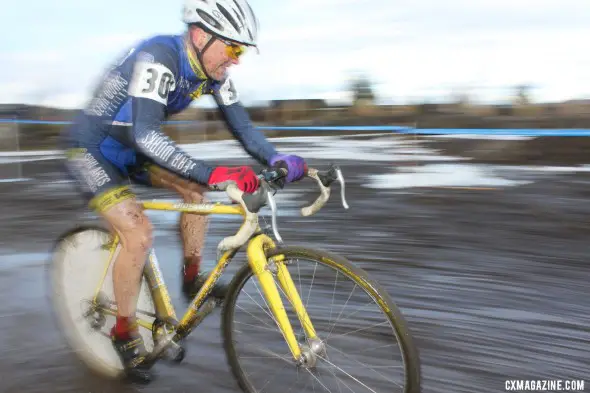
Paul Curley has years of knowledge to get his Tom Stevens Spin Arts bike as well as his new Felt fit picture perfect for the cyclocross season. © Cyclocross Magazine
Cyclocross is a sport based in technique, and while much of technique is based around handling and body position, both of those factors are determined by the fit of a bicycle. Today, Myerson offers his suggestions on how to get the fit just ride from the measurements on the road bike. Be sure to check out our upcoming Issue 30, where we go to fitters without even the base start of a road bike measurement, and we learn what a cyclocross specific fit from scratch means.
You can find other training ideas and articles at cycle-smart.com, as well as information on internationally-recognized coaching and clinic programs for all skill levels.
by Adam Myerson
Bike racing has a reputation for being an elitist sport. Not necessarily because all cyclists are snobs (though they may be), but more because cycling in the U.S. has been a sport that was difficult to find out about and get started with compared to mainstream ball sports. The people who did discover it found a secret world of Italian racing bikes and pink newspapers, or maybe decided to study French instead of Spanish in high school. Road cycling has always been a special subculture that was hard to crack, and so people were protective of the knowledge they gained, rather than eager to share it.
If road racing is a subculture, then cyclocross is another faction subdivided from that: the subculture within the subculture. If it was hard enough to find someone who would teach you how to glue your first set of road tubulars, there’s probably no one who was going to tell you the secret set up for dialing in your ’cross bike. That would have been blasphemy, giving all sacred knowledge away.
I was lucky to have masters like Paul Curley, Tom Stevens, and Mark and Frank McCormack, who were all willing to teach me the secret handshake. Things like cutting toe straps in half and bolting them to the sides of pedals, or running a spoke along the pedal platform to make it easier to slide the cleat onto the pedal and into the toe clips. Those are the lost arts of cyclocross.
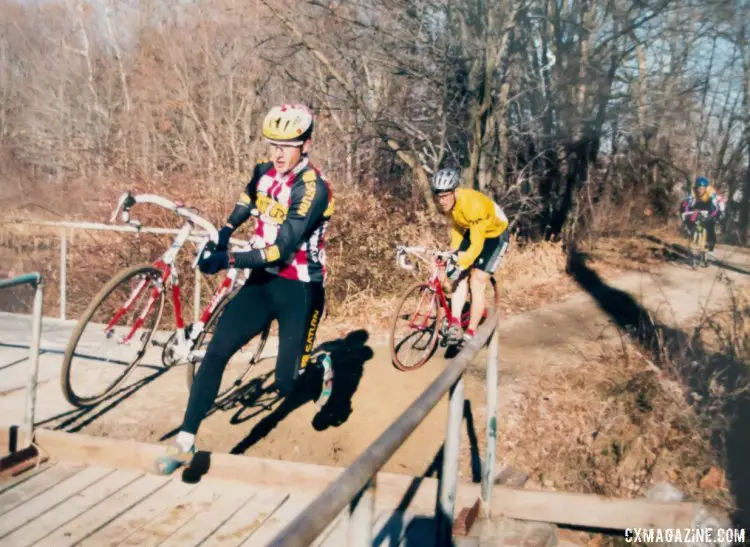
Throwback Thursday: Mentor Mark McCormack leading mentee Adam Myerson. Boston cyclocross from the late 90s. © Cyclocross Magazine
Things have changed since the late ’80s when I started racing. The barrier to entry is lower, the sport more open, and the knowledge base wider and deeper. Still, there are new riders entering the sport every season, either as their first time racing, or coming from a different discipline. One thing everyone needs to know is how to set their ‘cross bike up properly. In the next few articles I’m going to give all that secret knowledge away, starting with position.
Assuming your road bike fits correctly (which is assuming a great deal), your ‘cross bike can be set up relative to that as a starting point, However, a cyclocross bike really should be set up independent of any other position. Aerodynamics is rarely a concern on a ‘cross bike, but comfort, bike handling, and power production are. An ideal ‘cross position is one where you can reach your hoods while still sitting up with your upper arms and legs at 90-degree angles to your torso, similar to what you might look like on the tops of your bars on your road bike. Generally, there are five major points to consider: frame size, saddle height, saddle set back, handlebar reach, and handlebar drop.
Frame size
Keep it the same as your road bike. Traditional advice was always to downsize your ‘cross bike frame size because of the higher bottom bracket and lower saddle position. What you end up with is a bike that you can’t raise your bars high enough on because the head tube is too short. Bottom brackets on ‘cross bikes used to be very high to allow for clearance when pedaling on the backs of pedals that had clips and straps. With clipless pedals, most ‘cross bike bottom bracket heights have come down to that of a normal criterium bike. So, the need for a smaller bike to accommodate standover height doesn’t exist to the same extent. There is still a range of geometry and bottom bracket heights available that vary from brand to brand. Head tube length and the ability to keep your bars high, as well as a big enough triangle in the frame to put your arm through when shouldering are as important as how much seat post you have showing. ‘Cross bikes should be tall, while still providing standover clearance. Sloping top tube frames help with standover, but make lifting and shouldering more challenging. Personally, my preference remains with high bottom brackets and level top tubes.
Saddle height
Your saddle height on your ‘cross bike can vary from the same as your road bike to 1 cm lower. Some people keep the height the same and let the higher stack height of mountain bike shoes and pedals provide the lower overall height. Because you’re often riding on bumpy ground you’ll spend a lot of time slightly out of the saddle, hovering over it, rather than resting on it. There needs to be room for your bike to “dance beneath you,” in the immortal words of Eric Heiden at Paris-Roubaix. I find that no more than 5 mm lower is ideal for most people. If a perfect road fit has a slight heel up, flat forefoot at the bottom of the pedal stroke, a perfect ‘cross fit will have the forefoot and the heel level. On a ‘cross bike, you are the suspension system, so in addition to making power, you also have to be able to compress and rebound across inconsistent terrain while doing so.
Saddle setback
The nose of your saddle should generally be the same distance behind your bottom bracket center as on your road or mountain bike, and follow the KOPS (knee over pedal spindle) approach. It should be set up so that the soft spot below your kneecap or the indentation just behind the patellar tendon is immediately over the pedal spindle with your foot at the 3 o’clock position and your forefoot flat. In ‘cross you need to be able to explode down on the pedals with instantaneous power through the balls of your feet and be balanced between the wheels for good bike handling. You don’t have the benefit of being able to sit on the saddle and pedal circles, and almost all your force is made on the downstroke. Even the return or upstroke side is putting pressure on the pedals as you negotiate uneven terrain.
Reach
The distance from the nose of your saddle to the center of your bars should be 1-2 cms shorter than your road bike. This is so you can reach your hoods and drops without bending over to do so. You might also find it more comfortable to tilt your bars up slightly, or raise the brake lever position on the bars so that you can hold them solidly in your hand, rather than rest your hands on them. If a traditional hand position on a road bike is wrists slight down so the thumb is in the same plane as the forearm, in ‘cross you want the wrists to be perfectly straight and square, usually requiring a slightly hoods up rotation. This allows you to put full weight on the bars when needed, but also to lift the front wheel and steer without weight on the front wheel through mud and sand as well.
Drop
Drop is measured as the difference between the height of your saddle and the height of your handlebars, usually measured from the top of the saddle to the ground minus the center of the bars to the ground. Your bars should be 1-2 cm’s higher relative to your saddle than on your road bike. This is again so you can reach the bars without bending over, allowing to pedal and steer at the same time, and keep your weight back on dropoffs and downhills.
Have your best cyclocross season ever with all of our Training and Technique Tuesday pieces here from coaches Mayhew, Adam Myerson and Kenneth Lundgren and others. Can’t get enough? See our Cyclocross Academy and Cyclocross 101 articles here.













